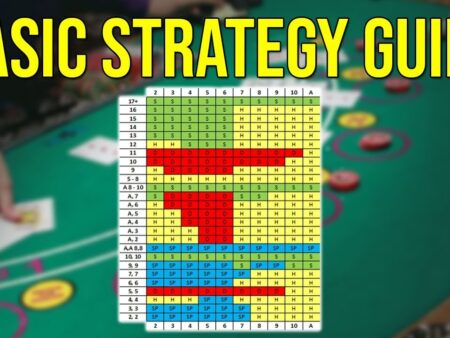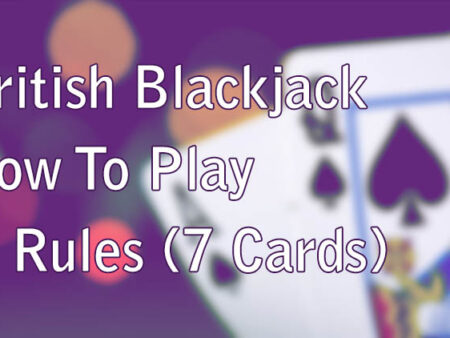
If you’ve been intrigued by the idea of beating the dealer with more than just luck, it’s time to consider card counting in Blackjack. This strategic method, shrouded in mystery and misconceptions, is quite accessible to anyone with average intelligence—there’s no need to memorize every card on the table.
Overview
Card counting demystified: Card counting is a strategic, systematic approach that focuses on understanding the changing dynamics of the game.
The basics: At its core, card counting is about keeping track of certain cards as they’re dealt to predict the likelihood of receiving favourable cards in future hands.
Simplicity in action: You’ll use a simple tallying system where you assign values to different groups of cards and adjust your ‘count’ as those cards appear. When the count is positive, the odds are in your favour.
The Legality of Counting Cards
One common question among aspiring card counters is whether the practice is legal. Here is what you should know:
Not illegal: Contrary to popular belief, counting cards is not cheating nor is it illegal.
Casino’s perspective: Although legal, casinos frown upon card counting and can reserve the right to ban players deemed too skilled, as it potentially undermines their profit margins.
Exercising your mind: Since card counting is about exercising your mental capabilities, it’s akin to playing chess at a high level.
Specialized training: You can even use card counting trainers to improve your skills legally and ethically, preparing you for real money games.
Adopting card counting is like adding a strategic arsenal to your Blackjack toolkit, giving you an edge where most rely on luck.
Best Counting Card Methods
They include:
The Hi-Lo System
If you’re intrigued by the notion of gaining a competitive edge in blackjack through card counting, the Hi-Lo system is a great place to start. Here’s how the Hi-Lo card counting strategy breaks down:
High Cards (10, J, Q, K, A): These are tagged with a value of -1. High cards favour the player because they increase the chances of hitting a blackjack and the dealer is more likely to bust.
Low Cards (2, 3, 4, 5, 6): These cards are assigned a +1 tag. The presence of more low cards is advantageous to the dealer, as they help him make qualifying hands and reduce the likelihood of busting.
Neutral Cards (7, 8, 9): These have a tag of 0, implying that they have no significant impact on the count.
As a skillful card counter, your task is to keep a running count throughout the game. You do this by adding or subtracting the tags of each card that is dealt. When the count is positive, the undealt cards are richer in high cards, and this is when you should increase your bets. On the flip side, a negative count implies a deck rich in low cards, signaling a time for caution with your wagers.
The KO (Knock-Out) System
You too can become proficient at card counting, and the KO (Knock-Out) system offers another tool to achieve your blackjack aspirations. This method eliminates the main complication of the Hi-Lo system: the true count adjustment.
Simplicity: The KO counting system assigns a value of +1 to cards 2 through 7 and a -1 to cards from 10 through Ace. The 8 and 9 cards are valued at 0. Unlike Hi-Lo, there is no conversion to a true count, making this method more straightforward.
Unbalanced Nature: The KO system is “unbalanced,” meaning that if you count down an entire deck, you’ll not end up at zero. This feature is designed to eliminate the additional step of calculating true counts, saving you time and mental energy.
Betting Correlation: By focusing on this running count, you can adjust your bets accordingly – increasing them when the count is high, indicating a surplus of high-value cards that favour you, the player.
The Omega II System
You have mastered the Hi-Lo system, and you feel confident about your card-counting skills. Now, you’re ready to explore a more advanced technique: the Omega II system. This is a balanced card-counting strategy, which means that if you were to count down an entire deck of cards, your final count would be zero. The Omega II is a multi-level system, with different cards assigned varying values that you will need to keep track of. Here’s how the Omega II system works:
Low Cards (2, 3, 7): Each of these cards is worth +1.
Mid-range Cards (4, 5, 6): These are valued a bit higher at +2.
Neutral Cards (8, 9): No value is added or subtracted for these cards; they are 0.
High Cards (10, J, Q, K): These cards subtract -2 from your running count.
Aces: Though considered high cards, Aces are unique and are tabulated at -1.
The Omega II system can seem daunting at first due to its multi-level count, but with practice, you’ll find it smooth to operate.
The Red Seven Count
You want to amp up your Blackjack game with a simplified yet effective counting strategy, and the Red Seven Count might just be your best bet. Unlike the Omega II system, this is a single-level, unbalanced counting strategy which is great for beginners or those who prefer a more straightforward approach. Here’s your step-by-step guide to using the Red Seven Count:
Start with a Running Count: Initialize your count at -2 for every deck being used in the game. For a six-deck game, your initial count should be -12.
Card Values: Cards from 2 to 6 (inclusive) are valued at +1, and the high cards, 10s, and face cards, are -1. The critical difference here is with the sevens; red sevens (diamonds and hearts) are counted as +1, while black sevens (spades and clubs) are counted as 0, hence the title “Red Seven” count.
True Count Calculation: You don’t need to convert to a true count in a single-deck game. For multiple decks, simply divide your running count by the number of decks remaining. This estimation doesn’t need to be precise; a rough calculation will suffice.
Betting Strategy: Increase your bet size as the count gets more positive, as a positive count indicates a higher chance of getting favourable cards.
Now, go ahead and practice this system at your own pace. Being less complex, the Red Seven Count allows you to maintain conversations, and enjoy your drink, yet efficiently work on increasing your edge against the house.
The Zen Count
As an ambitious player, always eager to expand your skills, the Zen Count can be an exciting addition to your card counting repertoire. It’s a balanced system, like Omega II, designed to provide a strong level of accuracy when it comes to assessing the remaining cards in the deck.
Here’s a quick breakdown of the Zen Count system:
Low Cards (2, 3, 7): They are given a +1 value.
Moderate Cards (4, 5, 6): These cards have a heavier weight, carrying a value of +2.
Neutral Cards (8, 9): These remain unchanged at 0.
High Cards (10s, Face Cards): Their value is -2, nudging you to keep an eye out as they deplete.
Aces: Aces are kept apart with a count of -1.
Adopt the Zen Count, and you’ll soon notice your ability to predict the flow of the game sharpening. Its unique aspect is how it treats Aces, allowing you to adjust your wagering strategy more astutely, especially in high-stake situations.
Paul Barnes cuts through the casino hype with honest reviews and strategy breakdowns. He’s played on every major platform, always looking for the hidden gems (and the ones to avoid).
More about Paul Barnes
Age: 31
Experience: Rising star in the online casino scene, 7 years of in-depth reviews
Background: Studied journalism before finding his passion in gaming analysis
Hobbies: Retro video game collector, aspiring board game designer
Residence: Brighton
Marital Status: In a committed relationship


